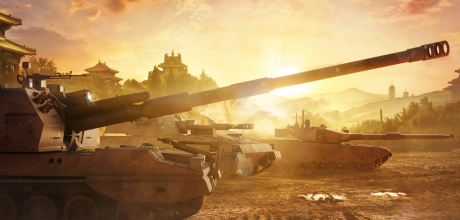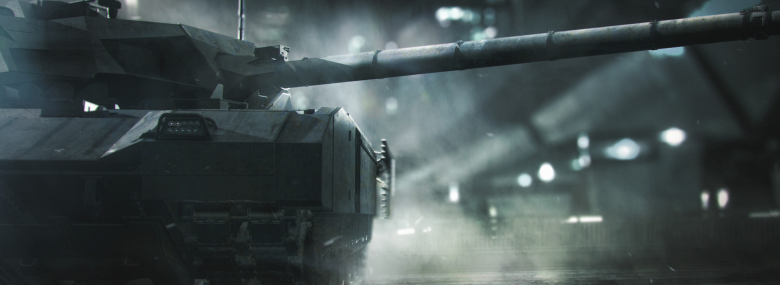
Commanders!
The Centurion AVRE Contract is slowly coming to an end and today, we’d like to unveil the next Contract Mission vehicle, which is the British AS90 Self-Propelled Gun.
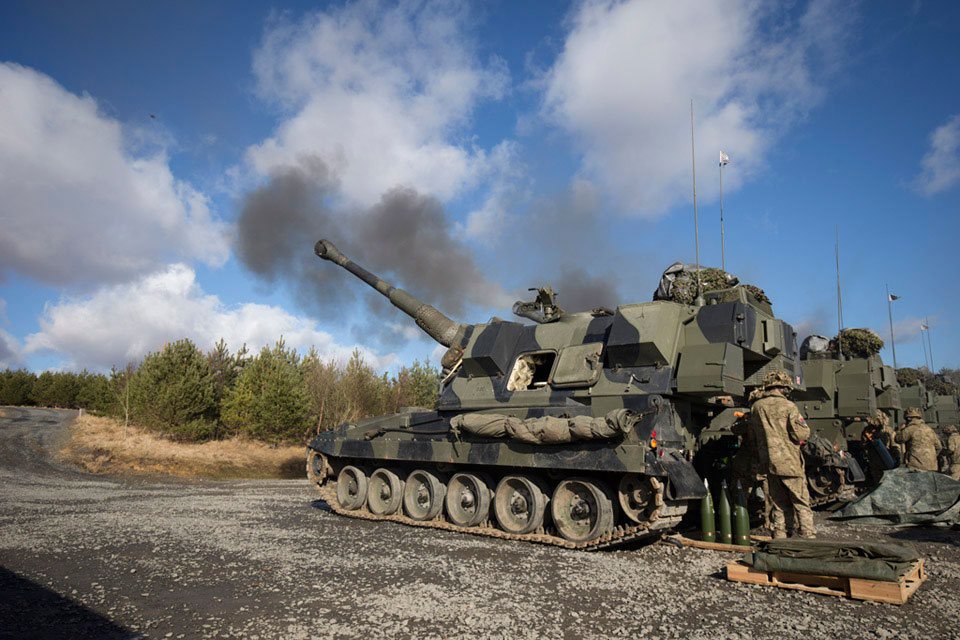
AS90
As usual, a little bit of history first.
The AS90 (which stands for “Artillery System for the 1990s”) started as a private venture of VSEL (Vickers Shipbuilding and Engineering Limited) to build a modern self-propelled howitzer based on an older export turret project from 1982 called GBT 155, which could be mounted on a number of platforms. In this case, the GBT 155 was trialed in India on a Vijayanta chassis (itself a Vickers tank) but never accepted in service.
Contrary to the GBT 155, however, the AS90 was aimed at the domestic market – Britain. In the 1980s, the British Army was looking for its next self-propelled gun to replace the obsolete FV433 Abbot with something with a lot more firepower and the Vickers’ FH70 towed 155mm L/39 gun seemed like a very good candidate for an upgrade in mobility and protection.
By the time the project begun, Britain was involved in the unsuccessful SP70 project along with Germany and Italy since 1973. After a decade of development, the result was noticeably worse than the American M109 Paladin, which ultimately led to its cancellation in 1984. Vickers knew about the project and its problems as it was the company involved in the design and production of the SP70’s main armament, the FH70 howitzer. They considered mechanizing this excellent gun fundamentally a good idea but with the SP70 national collaboration a mess as usual, they waged on the project dying on the vine. When that happened, they’d be ready.
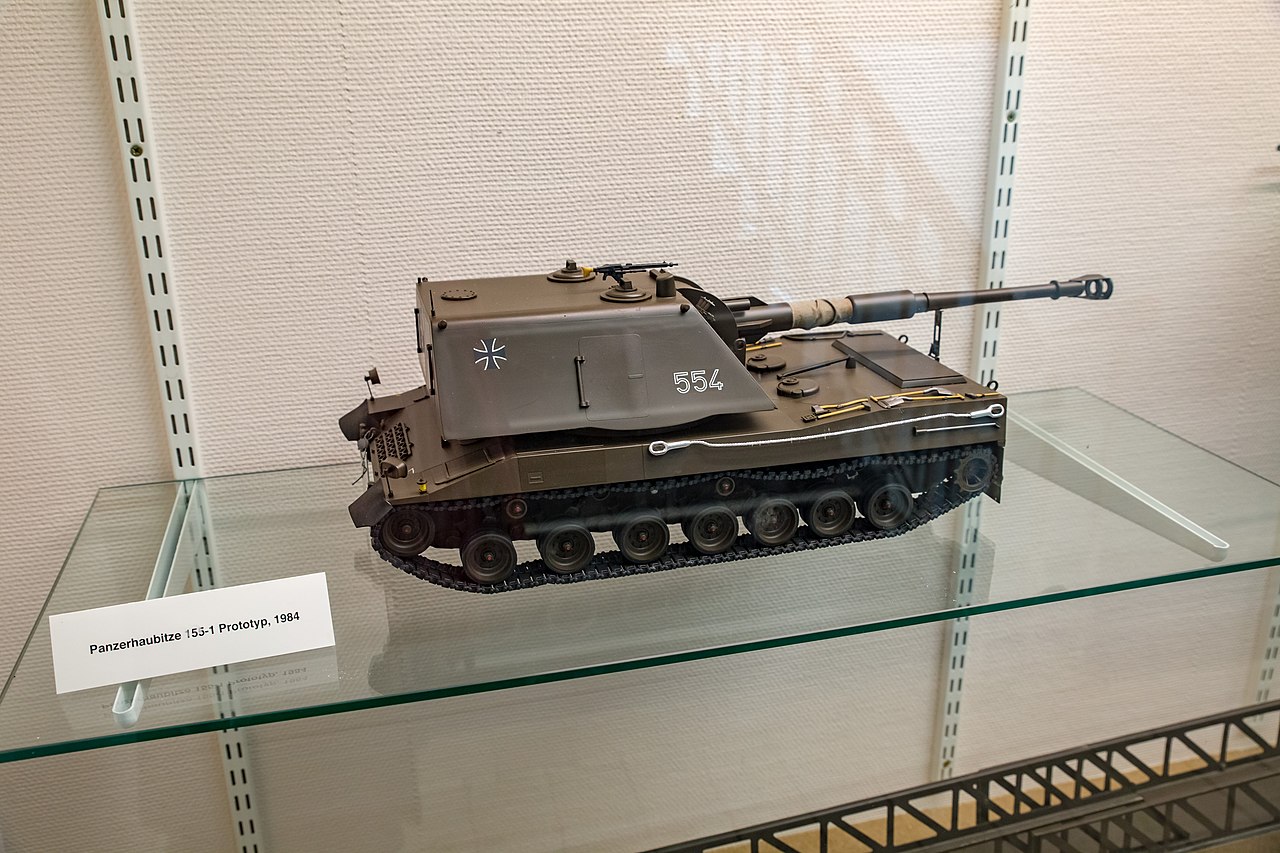
SP70
As its name suggests, the idea for the AS90 was to bring the self-propelled artillery concept into the 21st century. The emphasis was put especially on firepower, crew survivability and systems integration. The goal was also to make the system as easily operable as possible along with the ability to rapidly load, fire, and move away before any retaliatory counter-battery fire could harm it. The final important aspect of this design was the possibility of an upgrade – no gun stays unbeaten forever and the engineers were well-aware of that fact.
The development ran in one form or another from roughly 1982 to 1985 (the preparatory phase) with the first prototype being ready in 1986.
On one hand, the AS90 was innovative, but it was also to use well-proven components so that it could be rolled out quickly. The SPG was therefore of classic composition. It had a chassis with a front-mounted engine and a fully traversable turret. The crew consisted of five members (driver, commander, two weapon operators and a loader) protected by welded 17mm thick steel armor – barely enough to withstand heavy machinegun fire. But the emphasis was put on surviving counter-artillery strikes, specifically the 152mm shell fragments.
Additional protective measures included a NBC protection system, automatic fire suppression system, and turret-mounted smoke grenades.
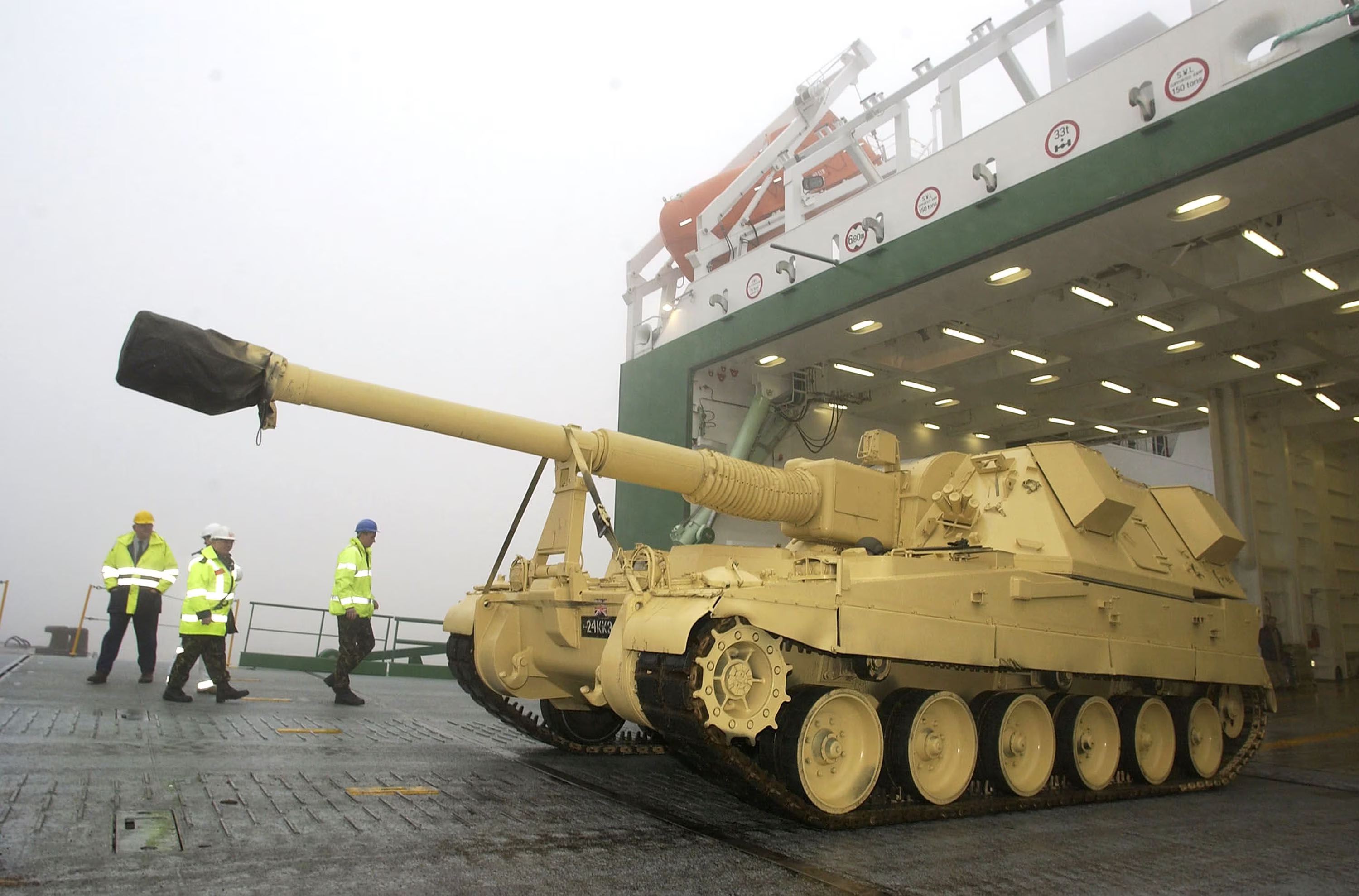
AS90
The 45 ton vehicle was powered by an American Cummins VTA-903T-660 14.8 liter engine V8 diesel engine producing 660hp at 2800 RPM, paired with ZF LSG 2000 automatic transmission. This engine was similar to that used in the Bradley or the MLRS rocket launcher and there were trial runs with it cranked up to 750hp – however, in British service it was detuned to improve its longevity and reliability. Regardless, it made the vehicle quite mobile and agile despite its ground pressure value being worse than that of the Paladin. Its maximum speed was 55 km/h. The average off-road speed was roughly 30-35 km/h.
The suspension was hydropneumatic and non-adjustable. The vehicle could cross a 0.88m tall wall or a 2.8m trench, or ford a 1.5m deep body of water. The maximum range was roughly 370km while driving at the speed of 45 km/h (which implies hard surfaces).
And last but not least, there was the firepower. The 155mm L/39 howitzer could fire NATO standard ammunition. The gun came with a fume extractor and a muzzle brake. The loading mechanism it used allowed it to fire:
- 3 rounds within 10 seconds
- 6 rounds per minute for 3 minutes
- 2 rounds per minute after that
The vehicle could carry 48 shells and charges inside (31 shells in the turret bustle in four modules). The gun could depress to -5 degrees and elevate to +70 degrees. The turret traverse was electric (10 degrees per second) with the power provided not just by the engine, but alternatively by an in-built auxiliary generator, reducing the need for the engine to be constantly running. The turret could also be traversed manually.
For its time, the AS90 used an advanced fire control system with automatic gun laying, navigation and other bells and whistles. The operators had a day/night telescopic sights at their disposal while the driver could use night driving optics.
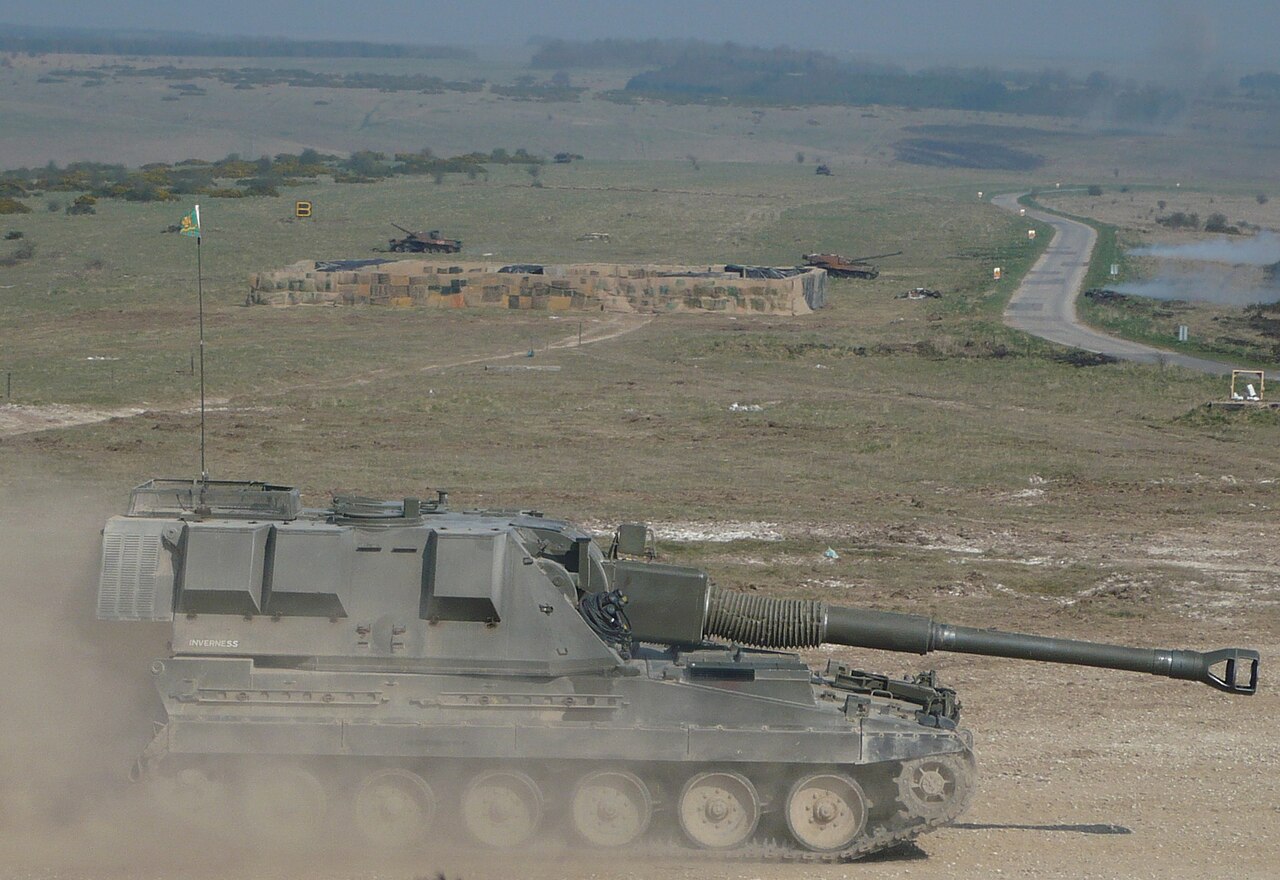
AS90
The June 1986 prototype was well-liked and underwent extensive military trials that ran until in June 1987. In late 1986, Britain left the SP70 project and started officially looking for its new SPG. The contest ran until June 1989 and the AS90 ended up winning it over the American M109A6 Paladin. A contract was signed for the production of 179 vehicles and the AS90 officially entered service in May 1992 under the name “Gun Equipment, 155 mm L131”. The full production run took place between late 1992 and the spring of 1995. The first British unit was operational in 1993.
The AS90 development didn’t stop there. In 1994, a prototype appeared featuring a Royal Ordnance 155mm L/52 gun along with a new shell charge system called MCS. Nothing really came of it, the time of the longer gun came later when, in 1997, a new AS90 variant with a 155mm L/52 gun was unveiled. This became known under the name AS90M “Braveheart”.
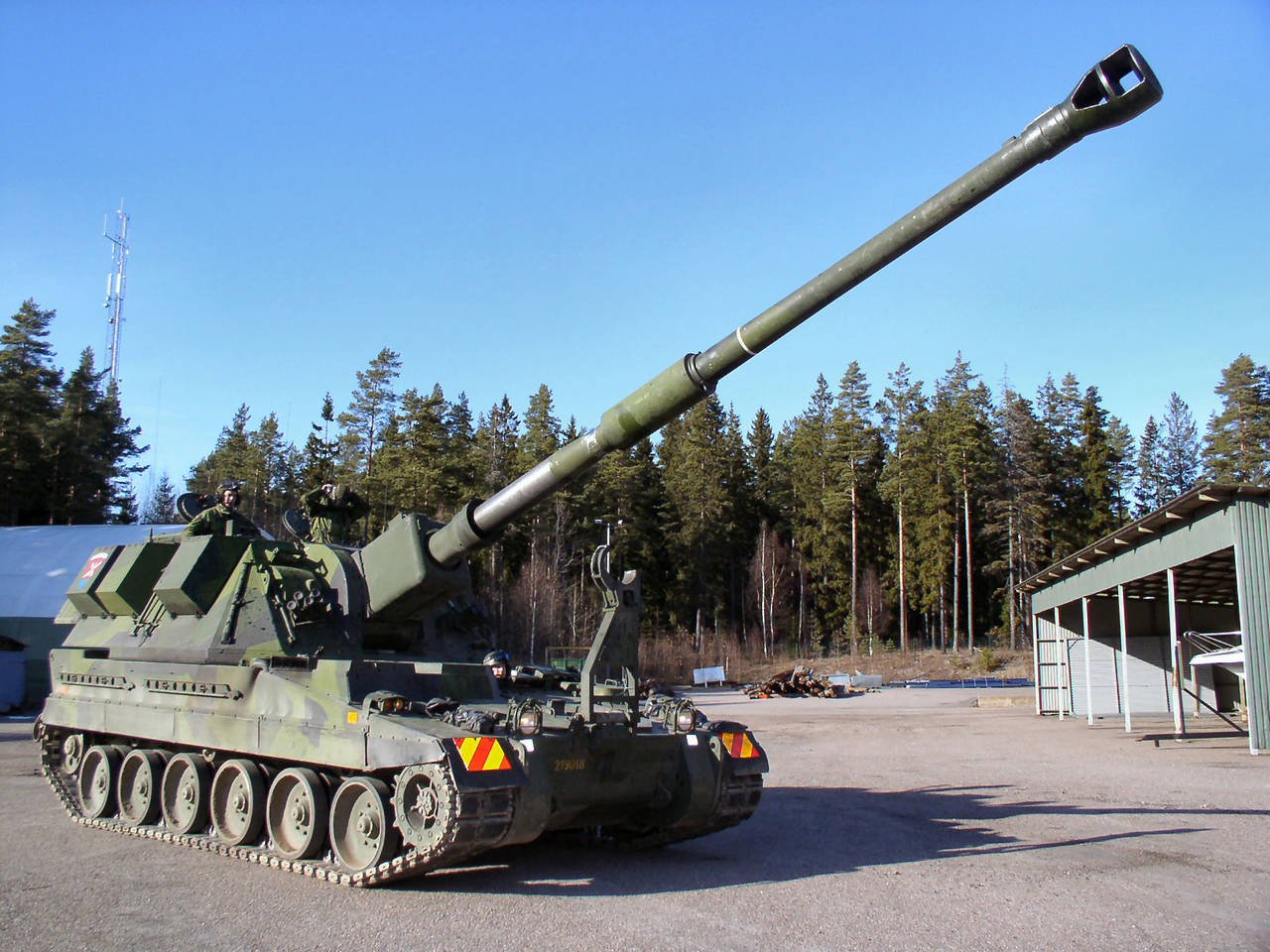
AS90M “Braveheart”
The turret of this system was eventually mated with the South Korean K9 Thunder chassis to produce the AHS Krab variant (which has a French gun), but that is not really an AS90 variant anymore and therefore beyond the scope of this article. The “Braveheart” was not used by Britain due to issues with the new shell charges (co-developed with South African Denel).
Further export attempts took place in the 1990s as well. In 1993-1994, the AS90 turret appeared on a T-72 chassis and was clearly intended for India. It passed some trials in 1996 but nothing really came of it. Another variant was the Desert AS90 (also known as AS90D) intended for the Middle East. The vehicle had improved cooling, air conditioning and different tracks. In 1996, it was successfully tested in Saudi Arabia and Kuwait but subsequently lost to the Chinese PLZ-45.
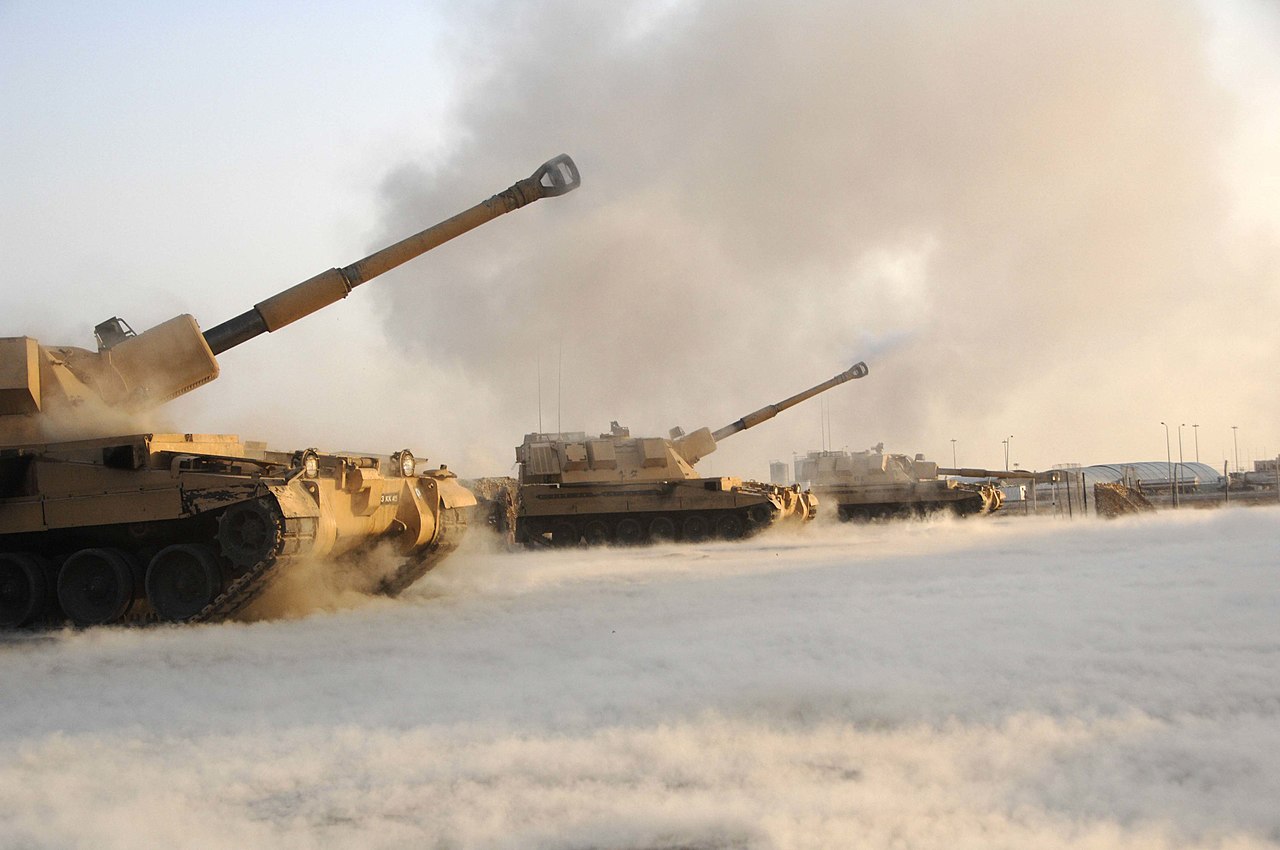
AS90 in Iraq
In British service, aside from the peacekeeping operations in former Yugoslavia (Operation Cambrai in 2001), the AS90 fought in the Iraq War. During its deployment there, it was re-painted to sand color and some of the vehicles were upgraded to the AS90D standard. They were used during the Battle of Basra. From the mid-2000s, aside from some partial electronics upgrades, the British started scaling the use of AS90 down. By 2008, 134 vehicles out of 179 were in service. Seven years later, in 2015, it was only 117. Currently, they are still use by two units:
- 1st Regiment Royal Horse Artillery
- 19th Regiment Royal Artillery
They are expected to stay in service until 2032. In early 2023, Britain announced it would send 32 vehicles of this type to Ukraine (in British service, they’d be replaced by the truck-mounted Archer artillery). This happened around April 2023 and the first combat footage appeared in May 2023. No losses of this artillery type have been reported so far.
In Armored Warfare, the AS90 is going to be a direct-fire Tier 8 Premium Self Propelled Gun.
Following the positive results of the overhauled Akatsiya testing, we will be introducing the AS90 as a direct fire vehicle that will be available in all game modes. We will be taking a lot of your feedback into account. Most importantly, this means increased reload times but higher damage per shot – and yes, the AS90 will hit hard.

Click the image to open a larger version
We’ll be introducing the “standard” L/39 howitzer variant firing HE and HEAT shells. The longer gun will be available as an overprogression module.
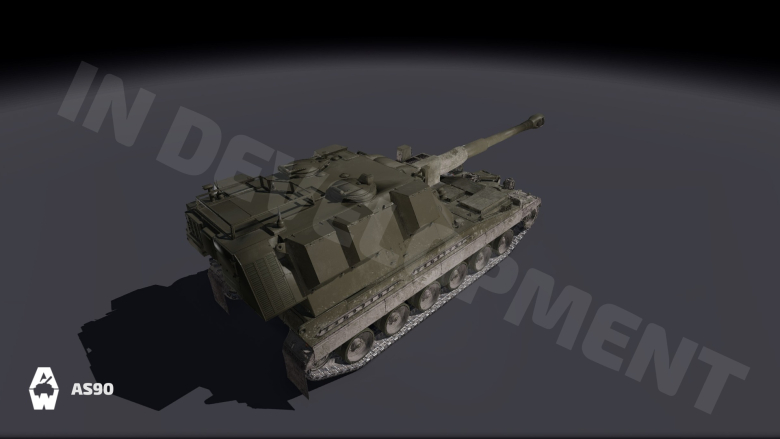
Click the image to open a larger version
The AS90 will also come with relatively high mobility and, of course, poor armor (although we’ll probably make it frontally resistant to basic autocannons).
And that’s pretty much it. We hope that you’ll enjoy it and, as always:
See you on the battlefield!





